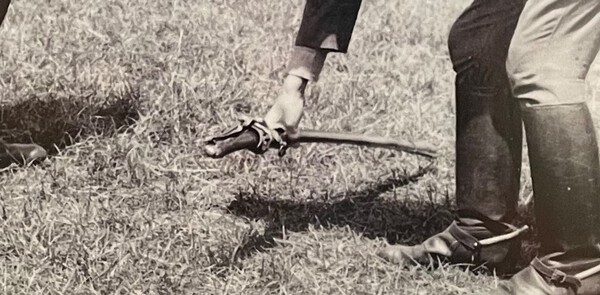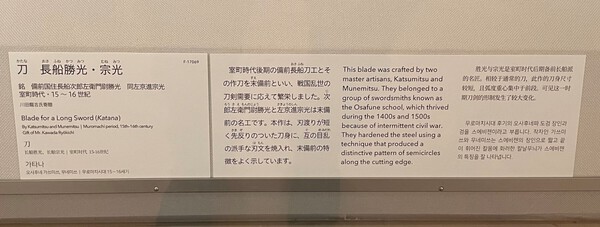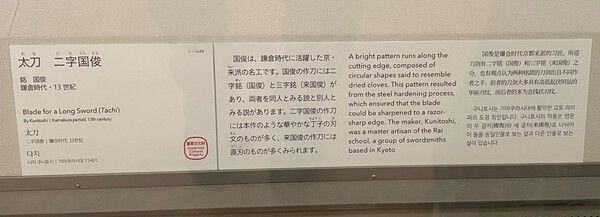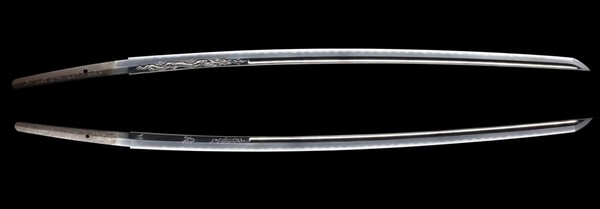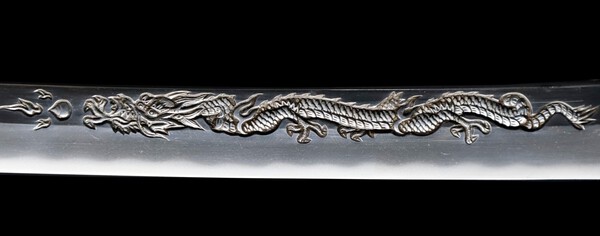-
Posts
741 -
Joined
-
Last visited
-
Days Won
14
Content Type
Profiles
Forums
Events
Store
Downloads
Gallery
Everything posted by Bryce
-
Thanks guys. Come on there must be more out there? Cheers, Bryce
-
G'day guys, Dragons are common subjects for horimono. There are many different styles out there. They pop up on this forum from time to time and people will often comment that this example is good, this example not so good and so on. If you are doing research on them it is difficult to find many examples in one place. I have discovered that it is also very difficult to take a good photo of one. I thought it might be a good idea to dedicate a thread to them. I will start it with this example by Gassan Sadakatsu dated 1920. Cheers, Bryce
- 51 replies
-
- 12
-

-

-
Another interesting detail about this blade is that the hamon is gunome and follows the ayasugi hada. Normally Sadakatsu put a suguha or notare hamon on his ayasugi blades. Cheers, Bryce
-
It is interesting to compare this subtle ayasugi, with the high contrast variety Gassan Sadakatsu also produced using mixed steels. High contrast from a 1943 dated blade left and 1920 subtle variety right. Cheers, Bryce
-
G'day Guys, Some better photos of the 1920 dated 67cm katana by Gassan Sadakatsu done in ayasugi. Cheers, Bryce
-
Thanks Jan, So they represent two of the five great wisdom kings, Fudo Myoo and Daiitoku Myoo. Both are protective entities. Cheers, Bryce
-
G'day Guys, I am wondering if someone can help me with the significance of these bonji on a katana by Gassan Sadakatsu. I think the top one represents Fudo Myo, the next Amida and lastly a stylised lotus throne. Loosely I think these equate to strength and kindness/wisdom. Am I on the right track? Cheers, Bryce
-

General's Swords In The Australian War Memorial
Bryce replied to PNSSHOGUN's topic in Military Swords of Japan
Yeah it definitely still had the tassel when it was surrendered. Couple of other interesting things, the tsuka was covered with the less common laced up leather wrap, which is still with the sword and General Uno was wearing spurs. Did he have a cavalry connection or was that standard dress for generals? Cheers, Bryce -

General's Swords In The Australian War Memorial
Bryce replied to PNSSHOGUN's topic in Military Swords of Japan
G'day Guys, I visited the Jezzine Barracks Military Museum in Townsville yesterday. On display they have the sword of Major General Uno which was surrendered to Lt Col Ewan Robson in Banjarmasin, Kalimantan. Cheers, Bryce -
- 6 replies
-
- 19
-

-

-

-
G'day Guys, Back in January I was lucky enough to visit Japan for a holiday with the family. I was planning on getting a nihonto fix while I was in Tokyo, but unfortunately I had to cut short my holiday to return home to prepare for a looming cyclone. As a result I only had one day in Tokyo, but I did get to visit the Tokyo Museum which had 11 blades on display. Obviously the blades were all behind glass, so it was a bit hard to see a lot of detail. I should have come prepared with a small telescope like I saw some of the locals using. Here are some photos of the blades which were on display. Cheers, Bryce
- 6 replies
-
- 10
-

-

-
G'day Guys, Here are some shots of the Gassan Sadayoshi yoroi-doshi tanto dated 1863. I believe the blade was made and signed by Sadakazu for his master. Cheers, Bryce
-
G'day Guys, I pulled out my iphone to try and capture some good images of my mumei blade, attributed by the NTHK to the shodai Chounsai Tsunatoshi. What do you think? Cheers, Bryce
- 1 reply
-
- 10
-

-

-

-
G'day Nicholas. I like it. I don't think the yasurime is sloppy. I think it may be early gendai. It almost reminds me of Gassan work. Do the numbers on the fittings correspond to those painted on the nakago? Cheers, Bryce
-
-
G'day David, The NTHK attribute it to the first generation. The sword was captured in New Guinea by an Australian army officer. There is a video of him online describing his encounter with the sword's former owner in the "Australians at war film archive". The Japanese officer (apparently a Major) was attempting to infiltrate an Australian position at night. Cheers, Bryce
-
G'day Guys, I was recently tempted by this nice gunto. The type 94 koshirae has a sakura, chuso release button and mon on the menuki. The blade is mumei, shinshinto and attributed by the NTHK to Chounsai Tsunatoshi. The blade is a little unusual in that the nagasa is only 63.6cm, but it is very stout at the machi and tapers down to normal dimensions at the yokote. Cheers, Bryce
-
G'day Gary, Thanks for sharing this. Looking at the amount of work that must be involved in carving a nice horimono, I have often wondered how the addition of a horimono affects the value of a blade. Recently I came across an article by Markus Sesko where he addresses this question. He presents an invoice from the renowned shinshinto smith Chounsai Tsunatoshi where he charges more for the addition of horimono than he does for the forging of the blade. In this case the addition of horimono basically doubles the price of the blade. Cheers, Bryce Breakdown of price for sword blade | Markus Sesko
-
G'day Dan, The blade itself looks to be much better quality than the nakago suggests. Is it possible that the very crappy nakago has been welded on at a latter date? From the photos I can almost convince myself that this is the case. Cheers, Bryce
-
G'day Guys, The small details on this just don't look right to me. I know that some of these details do vary, especially between different koshirae makers, but in this case, all the small details are different. I think it must be a repro as well. Cheers, Bryce
-
G'day John, So what are your conclusions on this? Is the sakura chuso button a feature of early 94's? Is it a favourite of a particular koshirae manufacturer? I just noticed that a lot of these examples also have a mon on the menuki, rather than the kabutogane. Cheers, Bryce
-
G'day Guys, A little bit more about the evolution of the "Gassan" habaki. It looks like in the 1920's Gassan Sadakatsu was also keen on the "bamboo fence" style of habaki. So far I have come across 6 examples of his blades with this style of habaki. Below are solid silver gilt and gold foil examples. Cheers, Bryce
-
G'day Guys, I called the above blade "Classic" Gassan School, but it is certainly not "average". Only around 1 in 20 of Sadakatsu's blades had a dragon horimono. Cheers, Bryce
-
G'day Guys, If I was asked to close my eyes and picture a "classic" Gassan school katana, this is what I would imagine. It is a Gassan Sadakatsu done in ayasugi hada with bohi and dragon horimono, dated 1920. Cheers, Bryce
-
I have since discovered another three tanto and a katana dated 1865 - 1870 where Sadakazu used this technique. Cheers, Bryce














